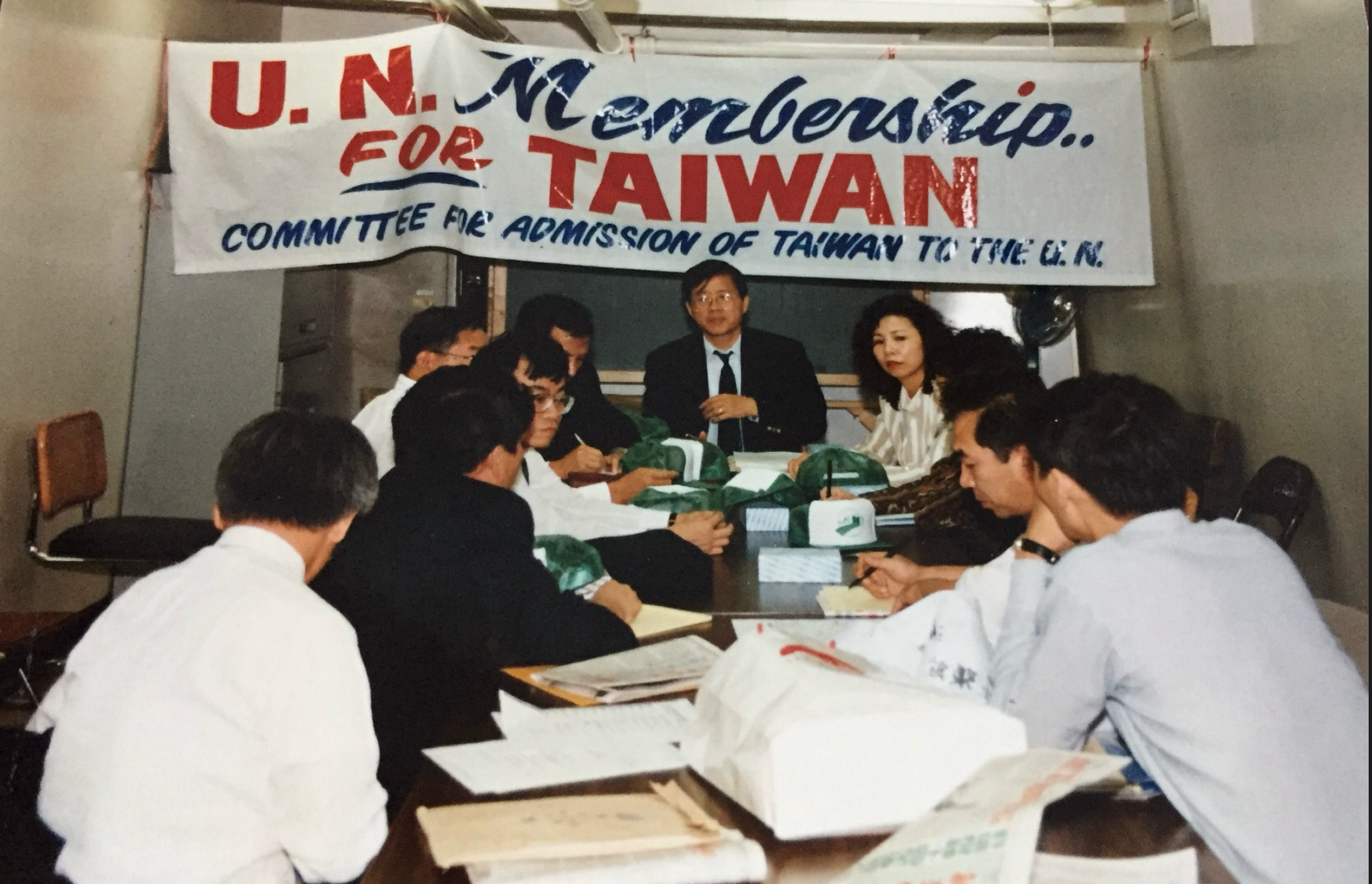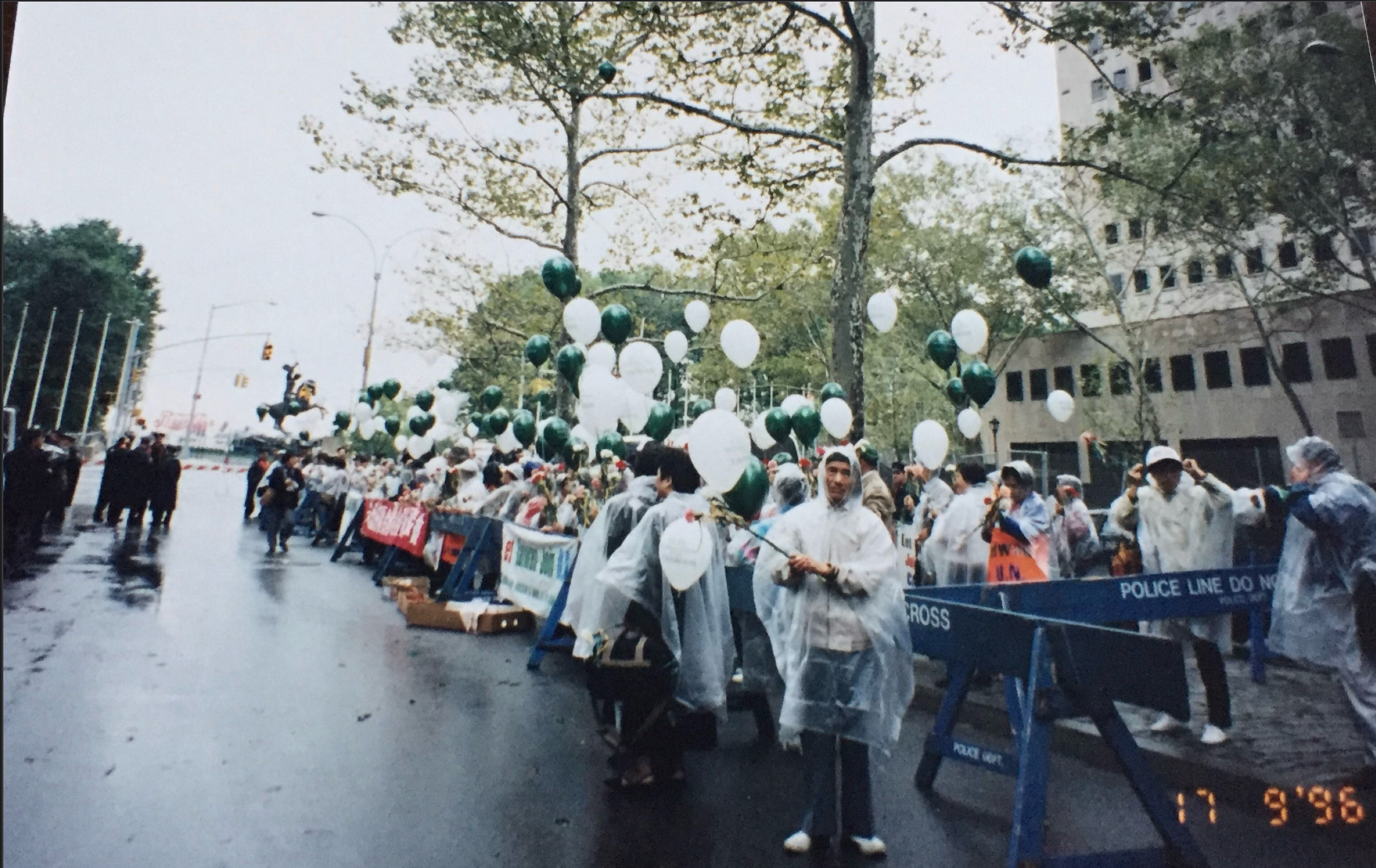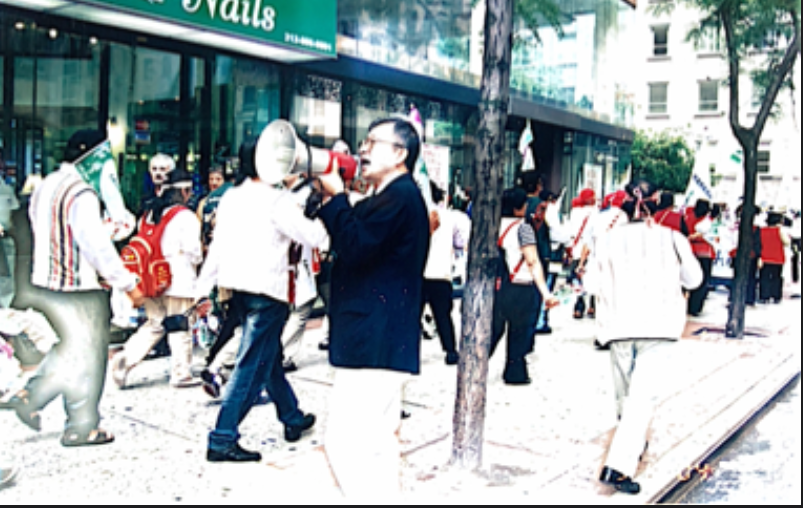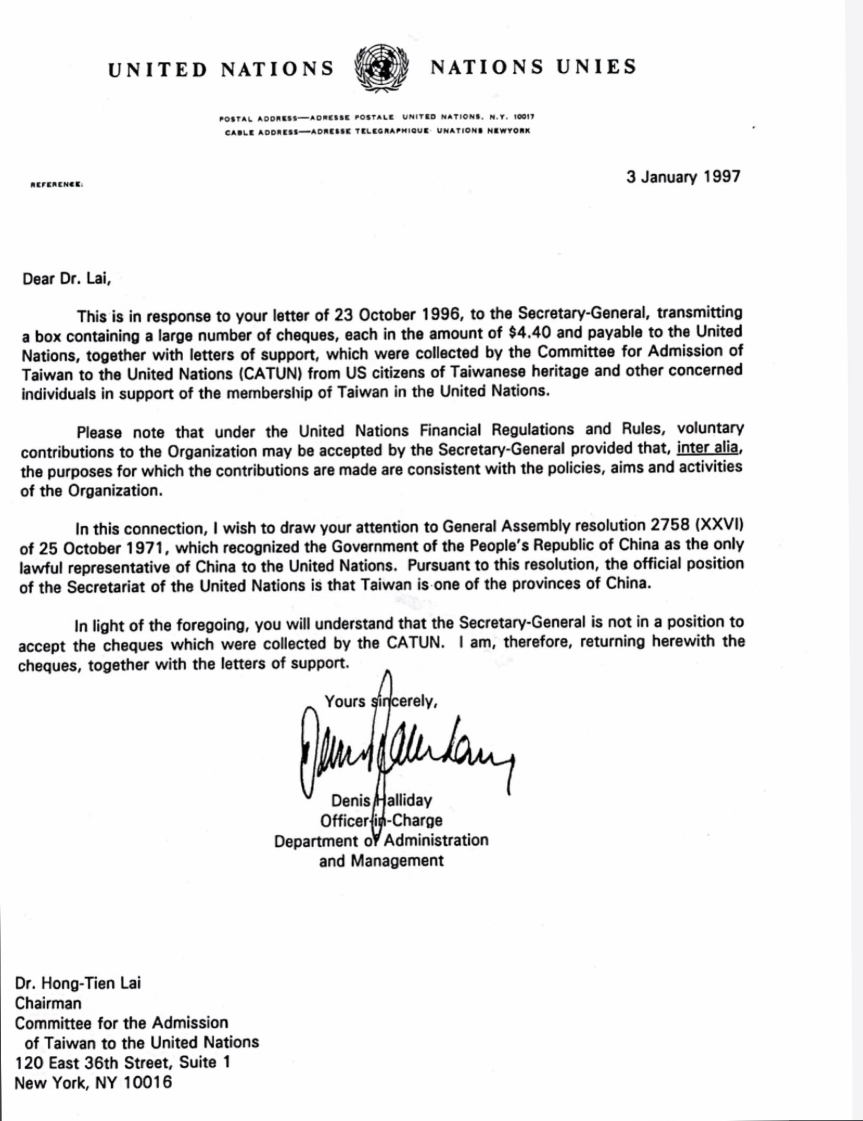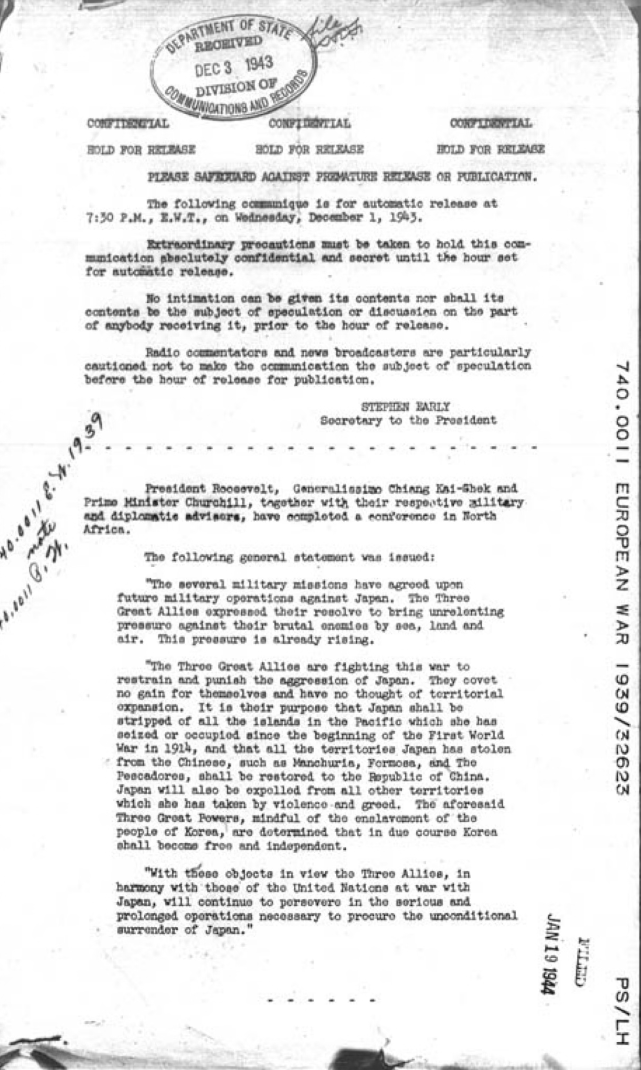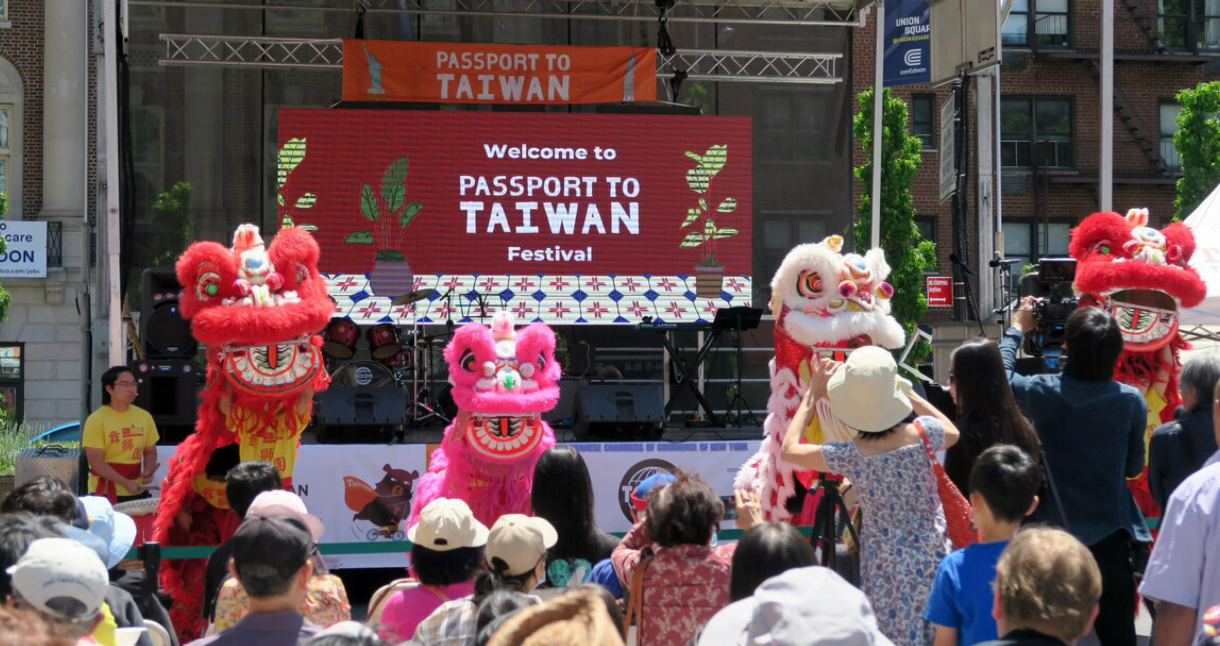Hong Tien Lai
(Chinese version)
After Japan’s defeat and surrender in World War II, the Allied forces appointed Chiang Kai-shek to temporarily administer Taiwan. At that time, Chiang Kai-shek’s Nationalist army was defeated by the Communist Party in the Chinese Civil War, leading him to flee to Taiwan with a group of defeated soldiers and establish military rule over Taiwan. This marked the beginning of the Kuomintang’s (KMT) authoritarian rule and exploitation of the Taiwanese people. Shortly after arriving in Taiwan, the 1947 February 28 Massacre occurred, and the establishment of the Taiwan Garrison Command initiated nearly 40 years of martial law and White Terror. Under this tyranny, the Taiwanese people’s resilient resistance, self-preservation, and pursuit of freedom and autonomy were awakened, leading to a series of resistance and opposition movements.
- In 1971, Chiang Kai-shek declared “the Han and the traitors cannot coexist” and withdrew from the United Nations, causing panic among the Taiwanese people and marking the beginning of Taiwan’s fate as an “international orphan.”
- In 1972, the General Assembly of the Presbyterian Church in Taiwan issued the “Declaration on National Affairs,” suggesting that the government face reality and implement democracy in Taiwan. However, the KMT government intensified its persecution of the Taiwanese church and confiscated the Taiwanese Bible.
- In December 1979, on “World Human Rights Day,” the Kaohsiung Incident occurred, marking the peak of the opposition movement. The Taiwan Garrison Command intensified its violent suppression and began arresting opposition figures.
- In 1980, the tragic murder of Lin Yi-hsiung’s mother and twin daughters occurred at his home.
- In 1981, when Chen Wen-cheng returned to Taiwan to visit his family, he was interrogated by the Taiwan Garrison Command, murdered, and his body was dumped on the National Taiwan University campus, with the authorities claiming he committed suicide out of guilt. The KMT attempted to use a series of terror and violence to suppress the Taiwanese people’s will to resist. However;
- In 1986, opposition figures still broke through the party ban and established the Democratic Progressive Party (DPP).
- In 1987, Chiang Ching-kuo lifted the world’s longest martial law.
- In 1988, Chiang Ching-kuo died, but the shadow of KMT’s authoritarian rule continued.
- In 1989, Cheng Nan-jung self-immolated in the fight for freedom of speech.
- In the same year, Lee Teng-hui succeeded Chiang Ching-kuo and became president, marking the beginning of a new era in Taiwan.
In the summer of 1992, when our friend Tsai Ing-wen returned to New York after working hard in Taiwan, he encouraged Taiwanese people living in New York to “promote joining the United Nations in the name of Taiwan” to break through the KMT’s isolationist policy at the time. As a result, the Taiwanese American Association of Greater New York established the “Taiwan United Nations Membership Action Committee,” initiating more than thirty years of efforts for Taiwan’s admission to the United Nations.
We have decided that every year on the second Tuesday of September, which is the opening day of the United Nations General Assembly, we will hold street parades and demonstrations.
Although we held various promotional activities such as parades, torch relays, and large-scale concerts to attract the attention of the international community, we felt our efforts were like “a dog barking at a train.” Just as we were feeling frustrated and running out of ideas to get the UN’s attention, in the summer of 1996, we saw a letter to the editor in the New York Times written by Dr. John Whitehead, the U.S. representative of the United Nations Association, a non-governmental organization. The letter protested the U.S. Congress’s refusal to pay millions in UN membership dues and called on American citizens to donate $4.40 each to the UN to help pay off the U.S. dues. Seizing this opportunity, we collected 1,000 checks from Taiwanese Americans, each for $4.40, along with petitions for Taiwan’s admission to the UN, and sent them to the UN Secretariat. A month later, as expected, the UN returned all the checks along with an official response. This was the first and only reaction from the UN to our movement.
The key part of the response is in the third paragraph:
In this connection, I wish to draw your attention to General Assembly resolution 2758 (XXVI) of 25 October 1971, which recognized the government of the People’s Republic of China as the only lawful representative of China to the United Nations.
Pursuant to this resolution, the official position of the Secretariat of the United Nations is that Taiwan is one of the province of China.
Considering the restoration of the lawful rights of the People’s Republic of China is essential both for the protection of the Charter of the United Nations and for the cause that the United Nations must serve under the Charter,
Recognizing that the representatives of the Government of the People’s Republic of China are the only lawful representatives of China to the United Nations and that the People’s Republic of China is one of the five permanent members of the Security Council,
Decides to restore all its rights to the People’s Republic of China and to recognize the representatives of its Government as the only legitimate representatives of China to the United Nations, and to expel forthwith the representatives of Chiang Kai-shek from the place which they unlawfully occupy at the United Nations and in all the organizations related to it??
Resolution No. 2758:
Recalling: The principles of the United Nations Charter,
Considering: That the restoration of the lawful rights of the People’s Republic of China is in accordance with the United Nations Charter and the United Nations organization established thereunder,
Acknowledging: That the representatives of the government of the People’s Republic of China are the only legitimate representatives of China to the United Nations organization, and that the People’s Republic of China is one of the five permanent members of the Security Council,
Decides: To restore all rights to the People’s Republic of China, recognize its government’s representatives as the sole legitimate representatives of China to the United Nations organization, and expel the representatives of Chiang Kai-shek from the seats they have illegally occupied in the United Nations and its affiliated organizations.
We all know that after the Chinese Communist Party defeated Chiang Kai-shek’s army, the People’s Republic of China was established on October 1, 1949, and immediately began applying for membership in the United Nations. It took 22 years until 1971 for China to join the United Nations based on Resolution 2758. However, upon reading the full content of Resolution 2758, it primarily addresses the representation of China in the United Nations and does not mention the word “Taiwan” at all, nor does it state that Taiwan is “a province of China.” This indicates that the position presented in the letters from the UN Secretariat, which has become the official stance of the United Nations, is entirely a result of the People’s Republic of China obtaining the representation of China and then using political pressure to influence the United Nations.
This shows that the United Nations, as an international organization, does not uphold fairness and justice as it contradicts its founding purposes and charter. It follows the jungle law where only the strong prevail. No wonder Taiwan’s voice, despite being small, is suppressed by such a major bully as the People’s Republic of China in the international community, to the extent that even the WHO, which upholds universal values for basic human health, excludes Taiwan.
Actually, in 1971, before the United Nations was about to pass Resolution 2758, the United States had always supported Chiang Kai-shek’s continued presence in the United Nations. However, by 1971, the United States also began to seek diplomatic relations and business dealings with China. They discussed with Chiang Kai-shek, hoping he would accept the concept of “Two Chinas” (similar to North and South Korea, or East and West Germany), or a “One China, One Taiwan” approach to remain in the United Nations. However, Chiang Kai-shek resolutely rejected this idea, citing the principle of “no co-existence with traitors” and walked out of the United Nations.
After Taiwan’s withdrawal from the United Nations, it became a “genuine” international orphan. We have all experienced the suffering since then, such as during the SARS outbreak a few years ago and the recent COVID-19 pandemic, where we were abandoned by the WHO and faced immense challenges. At that time, Zhu Rongji from the Chinese Communist Party even said, “Who cares about you!” Taiwan can only participate in international competitions under the name “Chinese Taipei,” among other unfair treatments.
In January this year, Taiwan held its presidential election, and Lai Ching-te was elected. After concluding his visit to Egypt, Chinese Foreign Minister Wang Yi was asked about his thoughts on the results of the Taiwan election during a press conference. He openly criticized, saying, “After World War II, according to the Cairo Declaration, Taiwan was returned to China. Taiwan is not a country and has no presidential election.” He explained, “In 1945, the United States, the United Kingdom, and China issued the Cairo Declaration, which clearly stipulated that ‘the territories stolen by Japan from China, including Taiwan, shall be returned to China.'” The former Foreign Minister Qin Gang also used the Cairo Declaration to intimidate Taiwan.
The Cairo Declaration, often cited in discussions about Taiwan’s status, is indeed a significant historical document. However, it’s important to note that the original document, known as the “Press Communiqué,” was issued after the Cairo Conference in 1943 and is preserved in various archives, including the U.S. National Archives and the National Diet Library of Japan
Indeed, the Cairo Declaration, as you rightly pointed out, appears to be more of a wartime communiqué rather than a formal treaty or document with legal binding force. The fact that it lacks signatures and formalization further highlights its nature as a press release aimed at conveying intentions rather than an official agreement for territorial transfer.
When we encounter distorted historical narratives from the Chinese Communist Party and the Kuomintang to deceive and oppress us, only scholars stand up to speak the truth for us. Richard Bush has stated that the Cairo Declaration was merely a “statement of intent” at the time and does not constitute a legal basis for territorial transfer under international law. Territorial transfer must be signed in a treaty to be effective. Many Taiwanese Americans know Richard Bush; he is a political scientist and China expert. He is currently the Director of the Center for East Asia Policy Studies at the Brookings Institution and a former Chairman of the American Institute in Taiwan (AIT). He is a heavyweight scholar who influences U.S. foreign policy. When Richard Bush was young, he often attended gatherings of Taiwanese people. Once, when I mentioned the historical inaccuracies in the Cairo Declaration, he said, “The Cairo Declaration was just a wartime press release typed up by Roosevelt’s secretary and was not carefully reviewed by Congress or the State Department.”
(And did not assign Taiwan to any country)
The Following general statement was issued: (Release the following general statement), proving that Richard Bush’s assertion of a “statement of intent” is correct.
“ It is their purpose that Japan shall be stripped of all the islands in the Pacific which she has seized or occupied since the beginning of the first World War in 1914, and that all the territories Japan has stolen from the Chinese, such as Manchuria, Formosa, and T 'he Pescadores, shall be restored to the Republic of China.”
(The purpose of this statement) is to return all the islands in the Pacific that Japan has seized or occupied since the beginning of World War I in 1914, as well as all the territories that Japan has stolen (occupied) from China, such as Manchuria, Taiwan, and the Pescadores Islands, to the Republic of China.
Let’s review the background of the issuance of the Cairo Declaration:
In 1943, after the Cairo Conference, leaders Roosevelt, Churchill, and Chiang Kai-shek prepared a wartime statement of intent (press release). We all know that in December 1941, Japan attacked Pearl Harbor, prompting the United States to declare war on Japan. By 1943, the United States was preparing for a major counteroffensive. The main purpose of the meeting between the three leaders was for the United States to promise substantial military aid and weapons to Chiang Kai-shek, encouraging him to resist Japan and keep the Japanese Kwantung Army locked in mainland China. This would prevent Japan from redeploying troops from China when the United States launched its counteroffensive in the South Pacific. Roosevelt’s secretary at the time did not consider historical accuracy.
Please note: “Manchuria” was occupied by Japan’s Kwantung Army after the Mukden Incident in 1931 and was indeed territory taken from China after World War I in 1914. However, “Taiwan and the Pescadores Islands” were ceded to Japan in 1895 after the First Sino-Japanese War (1894-1895) under the Treaty of Shimonoseki. Therefore, during World War II, Taiwan and the Pescadores Islands were Japanese territories, not lands occupied after 1914. Such historical inaccuracies should not appear in formal treaties under international law.
We all know that deception is a specialty of the Chinese. Wang Yi and Qin Gang must know that the Cairo Declaration is not a treaty. However, Ma Ying-jeou insists it is a treaty, claiming that Taiwan was returned to the Republic of China, which has since been replaced by the People’s Republic of China, thus implying Taiwan was returned to China. They deliberately misrepresent the 1943 wartime “statement of intent” as the Cairo Declaration after Japan’s surrender in 1945 (altering the timeline), making it seem like a post-war declaration. They package the wartime “statement of intent” as a treaty-like deception and falsely claim that Taiwan was stolen territory from Japan. This is a typical tactic used by Chinese politicians to deceive the international community with self-deceptive schemes. Richard Bush’s straightforward critique exposes this deception.
This reminds us of Joseph Goebbels, Hitler’s propaganda minister, who said, “If you tell a lie big enough and keep repeating it, people will eventually come to believe it.” The claim that “Taiwan is an inseparable part of China” is a prime example of such a lie, or “fake news.” Today, hasn’t almost everyone in the world accepted this piece of “fake news”?
Richard Bush also mentioned the treaty that determined Taiwan’s status: the Treaty of San Francisco (Peace Treaty with Japan), which was signed by 49 countries and came into effect six years after Japan’s surrender in 1951. This treaty clearly addressed the matter.
San Francisco Peace treaty with Japan September 8, 1951
The “San Francisco Peace Treaty” was rarely mentioned during our education under the KMT. It is likely that under KMT education, this historical fact was deliberately concealed from the Taiwanese people.
Let’s take a look at how the San Francisco Peace Treaty addresses the status of Taiwan.
In the section on territories, it is clearly stated that Japan renounced its sovereignty over Taiwan, and that’s all. It did not mention Taiwan’s status. It can be said that after Japan renounced its sovereignty, the sovereignty of Taiwan belongs to the Taiwanese people.
This is the groundwork laid for the Taiwanese people by John Foster Dulles, President Truman’s legal advisor at the time. After six years of traveling to various countries and visiting post-war Japan multiple times, he wrote the content of the treaty, giving the Taiwanese people the right to choose their future.
In 1955, U.S. Secretary of State John Foster Dulles (who was then Secretary of State under President Eisenhower), the co-author of the San Francisco Peace Treaty, affirmed that the treaty ceded Taiwan to no one. He confirmed that Japan “merely renounced sovereignty over Taiwan.”
However, no matter how many reasons we provide, using historical facts and legal principles to prove that Taiwan is not a part of China, we are up against a formidable opponent, like the “great red dragon” mentioned in the Bible—China. The official stance of the United Nations, regardless, has always adhered to China’s claims over the years. This is the international reality we must face.
We also understand that for Taiwan to survive internationally, we must choose the right side, and naturally, aligning with democratic countries like the United States is our path to survival.
- n September 2023, the United States Congress passed the “Taiwan International Solidarity Act” (HR 1176). This legislation formally clarifies that UN Resolution 2758 pertains only to China’s representation in the United Nations and has no relevance to Taiwan’s status, rejecting the notion that “Taiwan is part of China.” Although this voice of justice comes late (after more than thirty years), we are very pleased.Today, once the United States leads by asserting that Resolution 2758 is irrelevant to Taiwan, the United Nations will also be hesitant to emphasize “Taiwan is part of China,” and other democratic countries will gradually follow suit. The efforts for Taiwan’s survival and international space will be increasingly recognized. Although Taiwan and the United States do not have formal diplomatic relations, the practical relationship between Taiwan and the United States is almost equivalent to that of diplomatic relations.
This August, we witnessed the conclusion of the 2024 IPAC TAIPEI Summit (Inter-Parliamentary Alliance on China). Taiwan not only became a member but also hosted the summit, uniting 39 democratic countries to jointly consider how to safeguard the democratic system of freedom and security and uphold human rights values under the pressure of authoritarian China. At the same time, it also challenged China’s deliberate misinterpretation of UN Resolution 2758.
The movement for Taiwan’s entry into the United Nations has been ongoing for thirty-two years, and it is now being carried forward by the younger generation. Soon after we started our annual street movements in September, we also began holding a cultural event called Passport to Taiwan every May for the past twenty-five years. This cultural activity, in addition to the “street protest movement,” aims to enhance Taiwan’s visibility and engage in people-to-people diplomacy and cultural education.
For more than thirty years, we have all been working in various roles to enhance Taiwan’s international status. However, we know that the results have been limited. But in the past four or five years, we have been excited to see the name “Taiwan” suddenly become famous.
Thanks to the governance of the Democratic Progressive Party and the leadership of President Tsai Ing-wen. Internationally, we still need to face the daily threats and intimidation from the CCP, but we can only face them bravely. We stand on the side of justice and historical correctness, choosing the right direction and walking the right path. Taiwan has become the world’s Taiwan. Today, Taiwan’s existence has begun to influence the development of the global economy and technology. This is the result of the efforts of Taiwan’s leaders and the people of Taiwan working together. However, the opportunity for Taiwan to join the United Nations and participate in other international organizations will remain challenging unless the international community, like the United States, begins to challenge the UN’s Resolution 2758 and the “lie” that Taiwan is a province of China, and until the realization of one country on each side of the Taiwan Strait.
Finally, let us use a popular saying in Taiwan: No matter how difficult the road ahead is, we must move forward step by step. “If there is a road, we sing along the way; if there is no road, we wade through the stream and climb over the ridge,” moving towards the place with light. We also use this Taiwanese spirit, and our movement will continue from generation to generation until the day Taiwan emerges.
